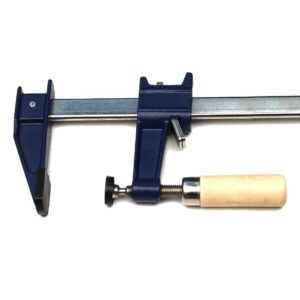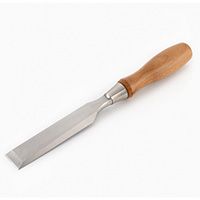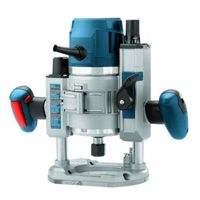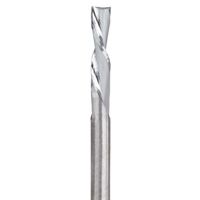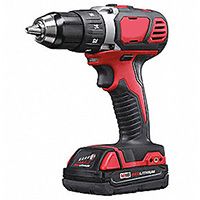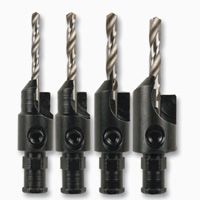A slatted bench is a great way to add a stylish and functional piece of furniture to your home or outdoor space. You can likely build one yourself using straightforward woodworking techniques and our guide. This Old House general contractor Tom Silva demonstrates the build process in the video above.
Materials and Tools Needed
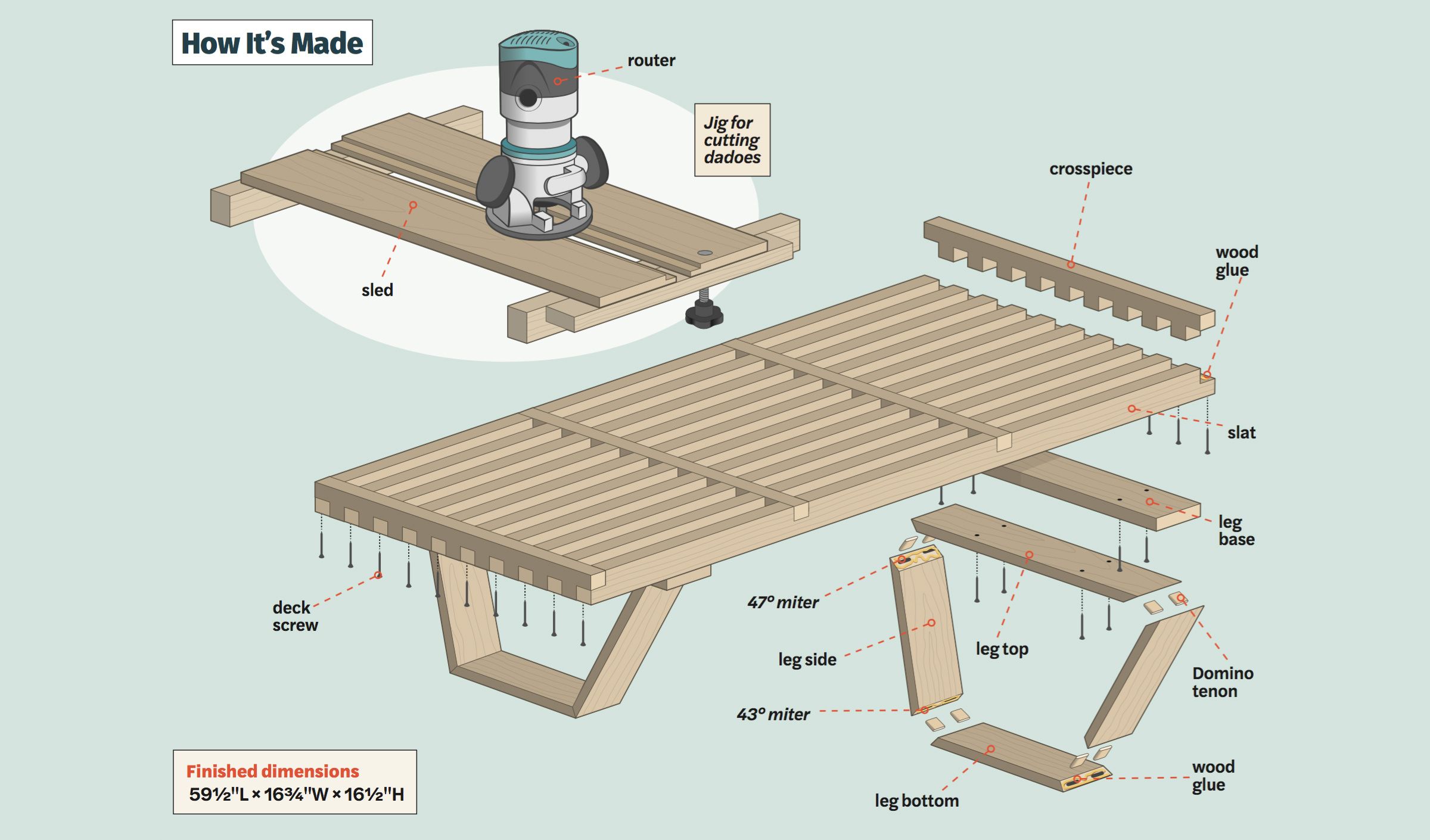
Silva built this bench out of ipe deck boards, which can be found at any home center. He liked the idea of ipe for the bench so it could be used for either an indoor or outdoor application. To cut all the boards to the proper dimensions and assemble the bench, Silva used a variety of tools, including a Domino Joiner, a Kapex KS120 sliding compound miter saw, a TS 55 circular saw, and an Industrial Table Saw from SawStop.
He secured everything together using GRK #8 1 1/2-inch multi-purpose screws from GRK Fasteners and some wood glue from Gorilla Glue. All of the other tools and materials used to build the bench can be found at home centers. Here’s what you’ll need:
Materials
- 100- and 180-grit sandpaper
- 1 1/4-inch #8 Torx-head deck screws
- 1×3 ipe decking (approximately 40 linear feet)
- 4×20 mm Domino tenons
- Wood glue
Tools
- 1/2-inch up-cut router bit
- 3-hp plunge router
- 8 countersink bit
- Bar clamps
- Bench chisel
- Domino joiner
- Drill/driver
- Large rafter square
- Miter saw
- Random-orbit sander
- Rubber mallet or hammer
- Table saw
- Track saw or Japanese flush-cut handsaw
Steps for Building a Modern Platform Bench
Follow our step-by-step instructions to build your platform bench below. Use safety goggles and other projective gear while working with power tools.
Step 1: Prepare the Slats

- Using a table saw, rip the decking in half to about 13/4 inches wide.
- For the legs, rip the stock down to 21/8 inches wide.
- Sand the sharp corners made by the saw.
Step 2: Cut the Leg Pieces
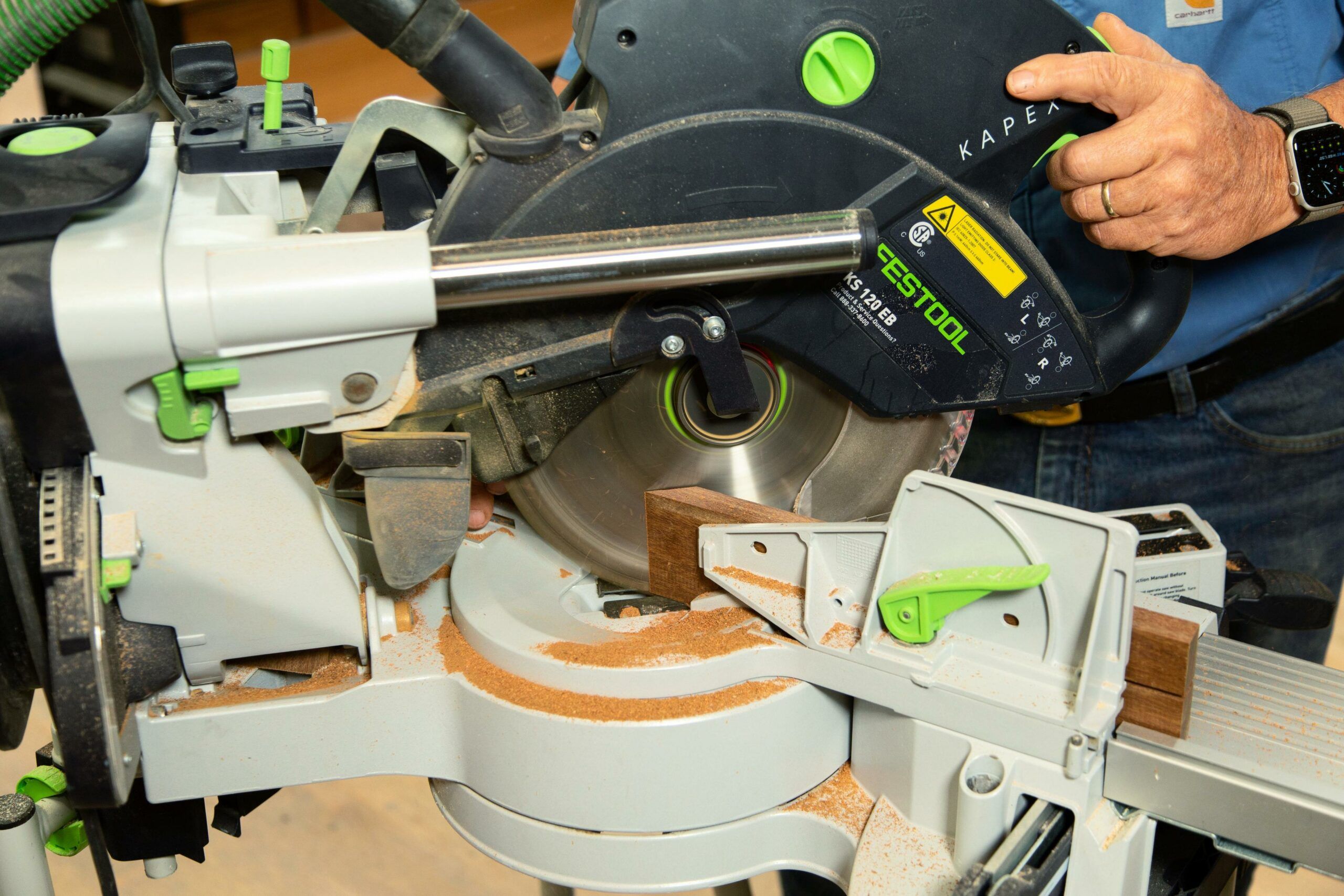
- Rip the ipe stock for the legs to 2 1/8 inches wide.
- Cut the leg pieces to the appropriate lengths, taking into account the angles needed for the trapezoid shape.
- Use a miter saw to cut the ends of all eight leg pieces at the correct angles (47 degrees for the top pieces, 45 degrees for the side pieces, and 43 degrees for the bottom pieces).
Step 3: Create the Mortises
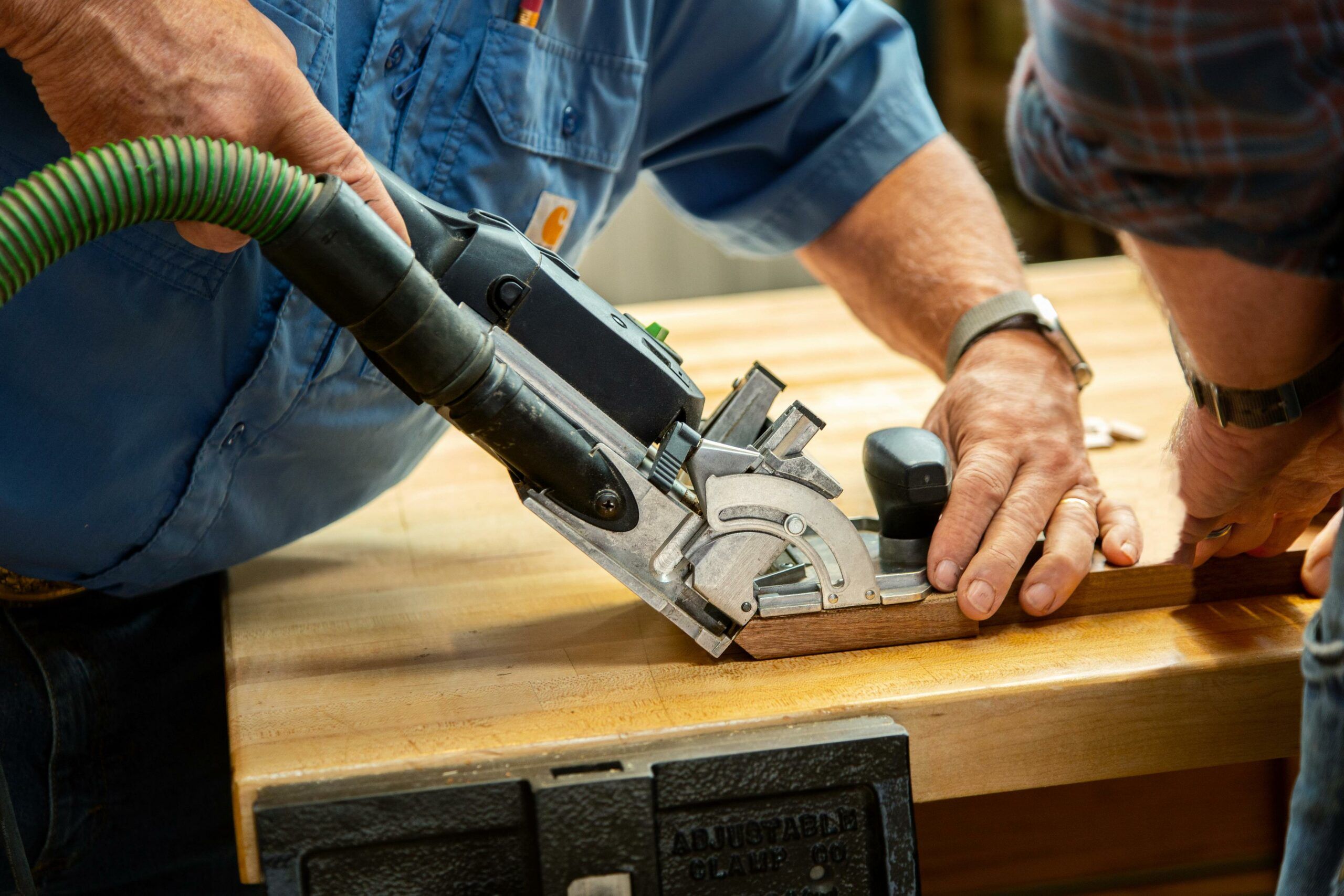
- Set the angle of the Domino joiner fence to match the miter angle of each leg piece.
- Line up the joiner with the pencil lines drawn across each joint and plunge the bit into the end grain.
- Repeat this process on all leg pieces until you have a total of 16 mortises.
Step 4: Assemble the Legs

- Apply wood glue to the mortises on both sides of each leg joint.
- Insert the Domino tenons into the mortises on one side.
- Spread glue over the end grain on both leg pieces and push them together.
- Repeat this process for all eight leg pieces.
Step 5. Clamp the Leg Assemblies

- Use two bar clamps to tighten the top and bottom of each leg assembly.
- Leave the clamps in place for at least 30 minutes to allow the glue to set.
- Check that all joints are properly aligned, and wipe away any excess glue with a damp rag.
Tip: Glue that squeezes out of a clamped joint is a normal and expected part of the woodworking process. However, it’s important to wipe up every drip before it dries and leaves a stain-resistant discoloration on the wood’s surface.
In most cases, a damp rag will do the trick, but when a rag can’t reach the glue nestled deep in an inside corner, enlist a tool, such as a beveled-edge bench chisel shown at right. Just make sure to thoroughly clean any glue off it, too.
Step 6: Route the Slats
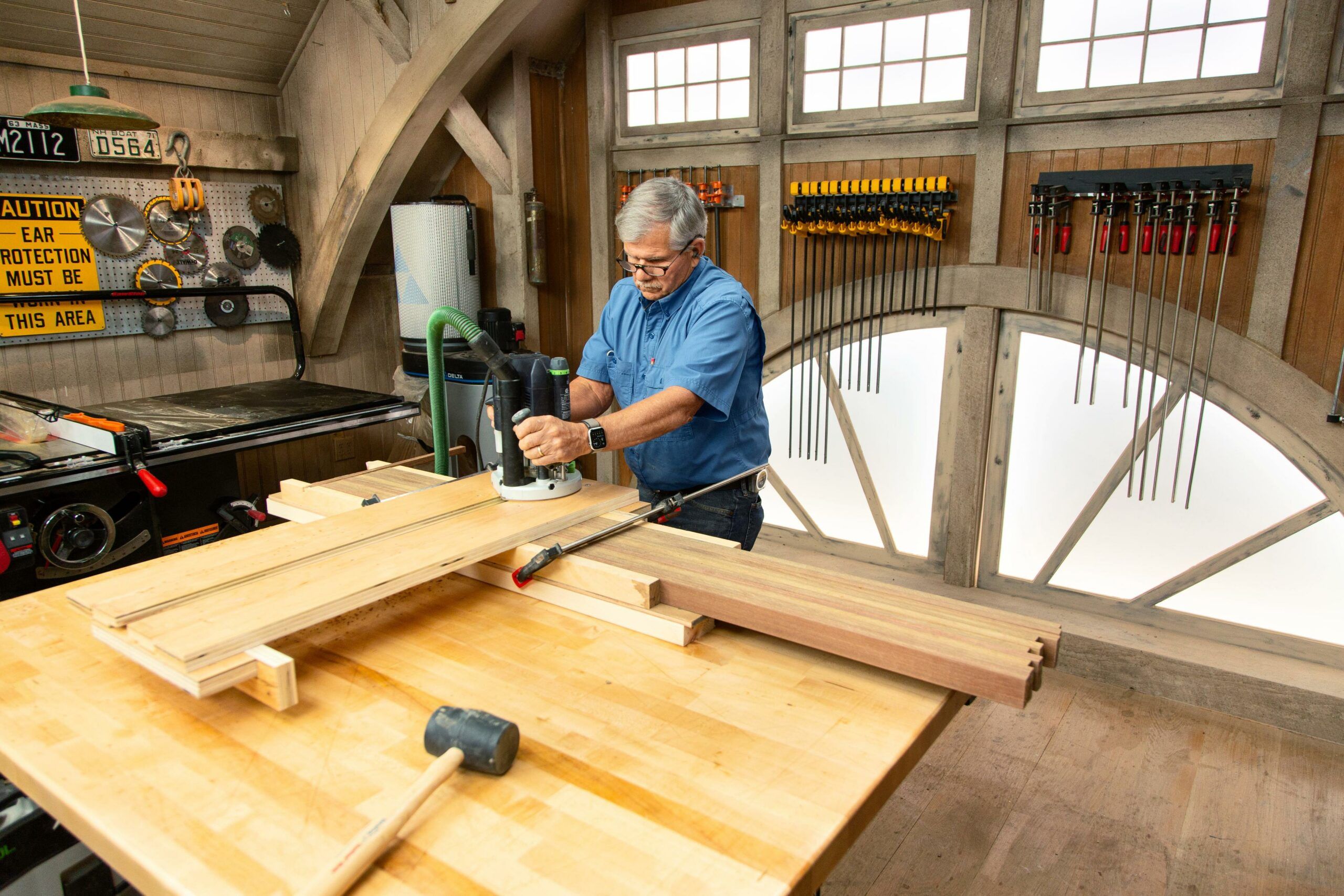
- Build a sled for your router to gang-cut 3/4-inch-wide dadoes in the slats.
- Clamp the long slats together between two long 2-by-3s set on edge.
- Place the sled on top of the slats and clamp it down.
- Make three or four shallow passes with the router until the notches are 7/8 inches deep.
- Shift the position of the sled and rout the remaining sets of dadoes in the same manner.
- After each set is done, fit a scrap crosspiece in the freshly cut dadoes to keep the slats from shifting.
Step 7: Notch the Crosspieces

Clamp the four crosspieces together and rout the dadoes using the same method as for the slats. Each crosspiece should have 10 notches. After routing, unclamp the pieces and sand both faces of each crosspiece.
Step 8: Assemble the Top
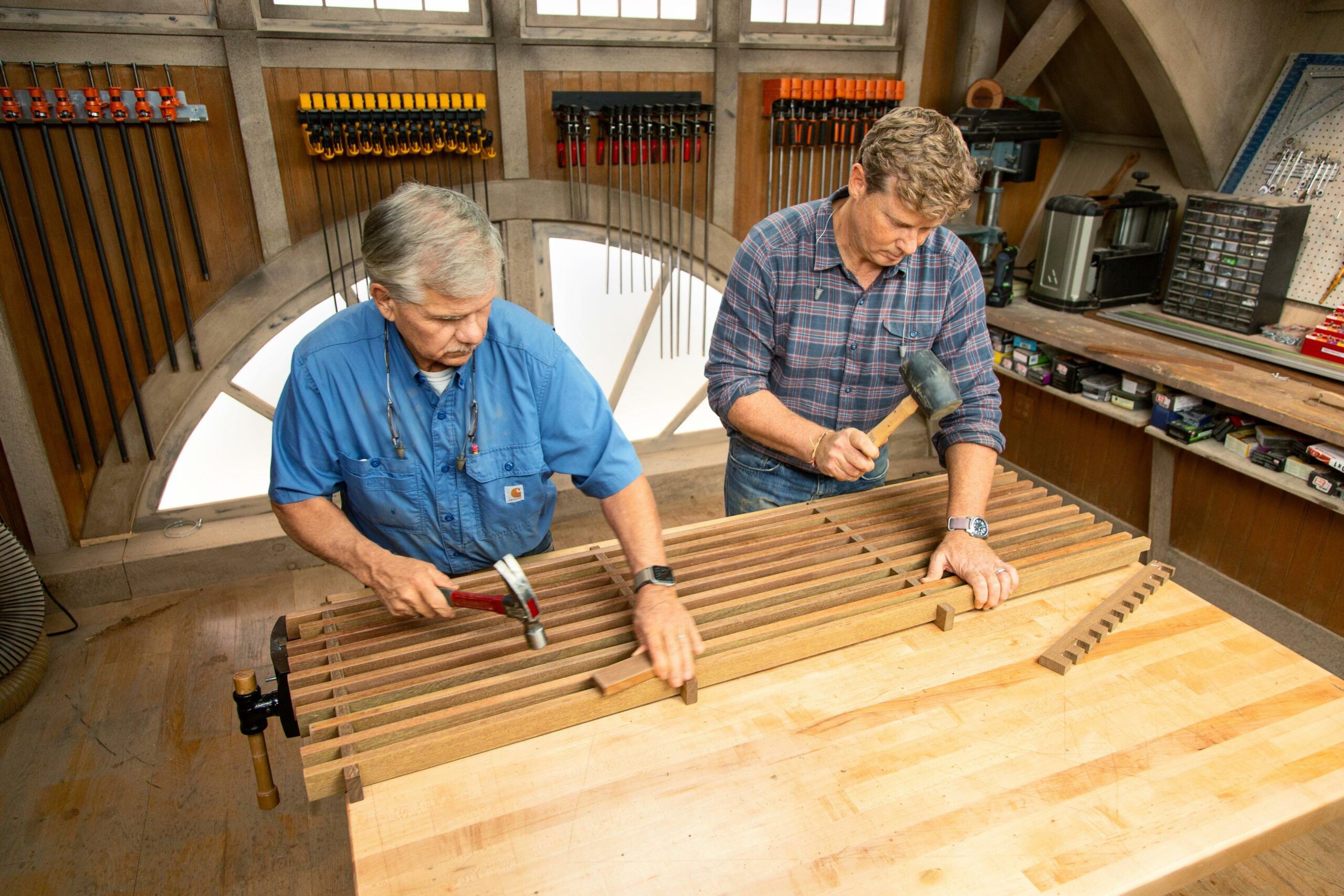
- Apply wood glue to the bottom of the notches in all slats and crosspieces.
- Fit the downward-pointing notches of the first slat into the first row of upward-pointing notches in the crosspieces.
- Tap the slat into place with a rubber mallet.
- Repeat this process with the remaining slats.
- Wipe away any excess glue.
Step 9. Fasten the Top’s Joints
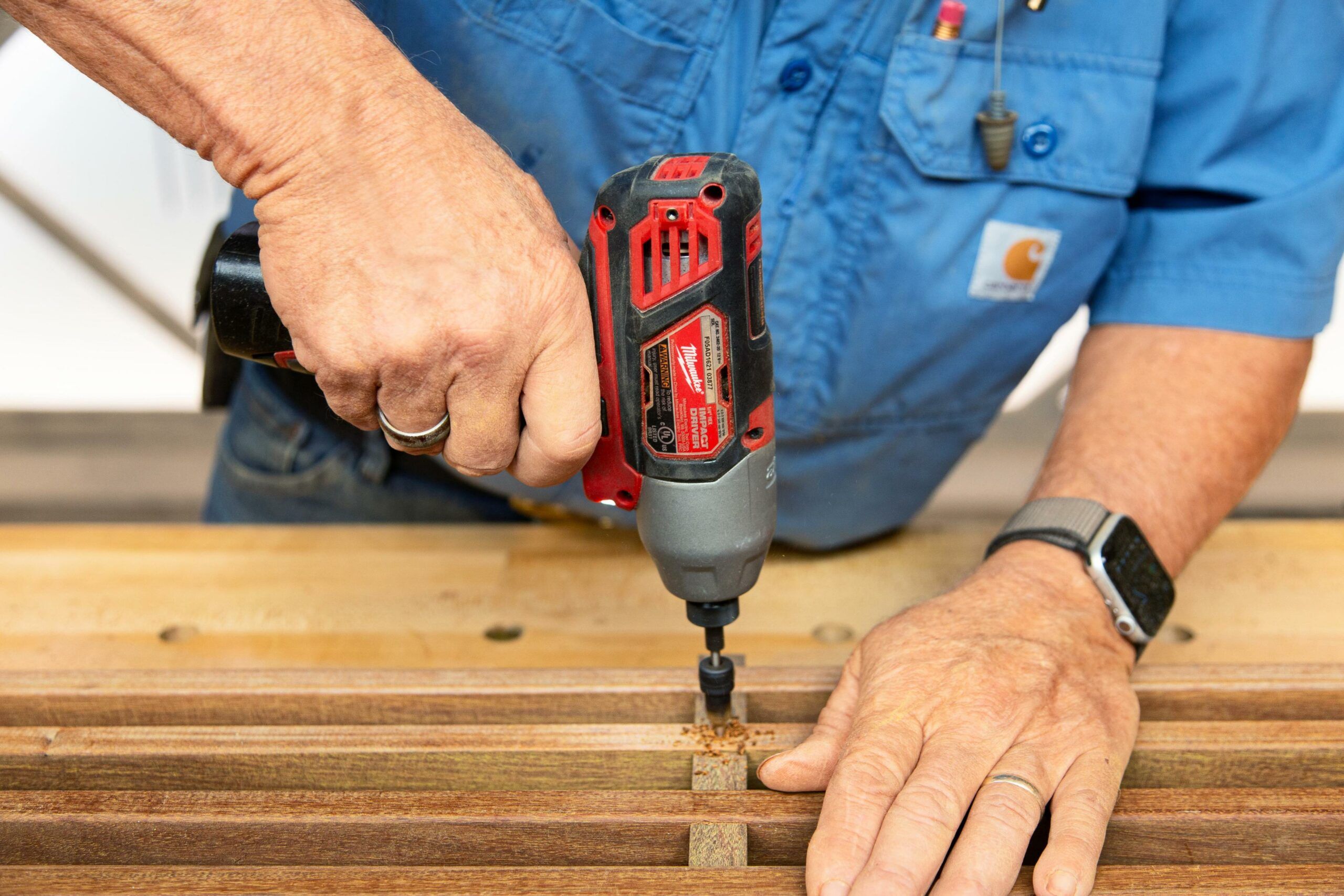
Use a countersink bit to drill into the center of each stringer, where it laps a crosspiece. Then, drive a deck screw into each pilot hole. Wipe away any drips.
Prep the Bench to Go Outside
The ipe will do fine out in the weather, but the glue and screws used here need the protection of a porch roof. To make this a truly weatherproof bench for use outdoors, glue the legs, slats, and crosspieces with a Type III waterproof wood glue, and fasten them with no-rust, 316-grade stainless-steel screws.
As for the ipe, you can let it turn gray for the ultimate low-maintenance surface. Or coat it with a low-VOC, penetrating tung oil such as ExoShield Premium Wood Stain to help the wood retain its deep, rich color.
Step 10: Trim the Slat Ends

Use a track saw or Japanese flush-cut handsaw to cut the projecting ends of the slats flush with the crosspieces. Smooth the end pieces with 100- and 180-grit sandpaper.
Step 11: Attach the Leg Bases
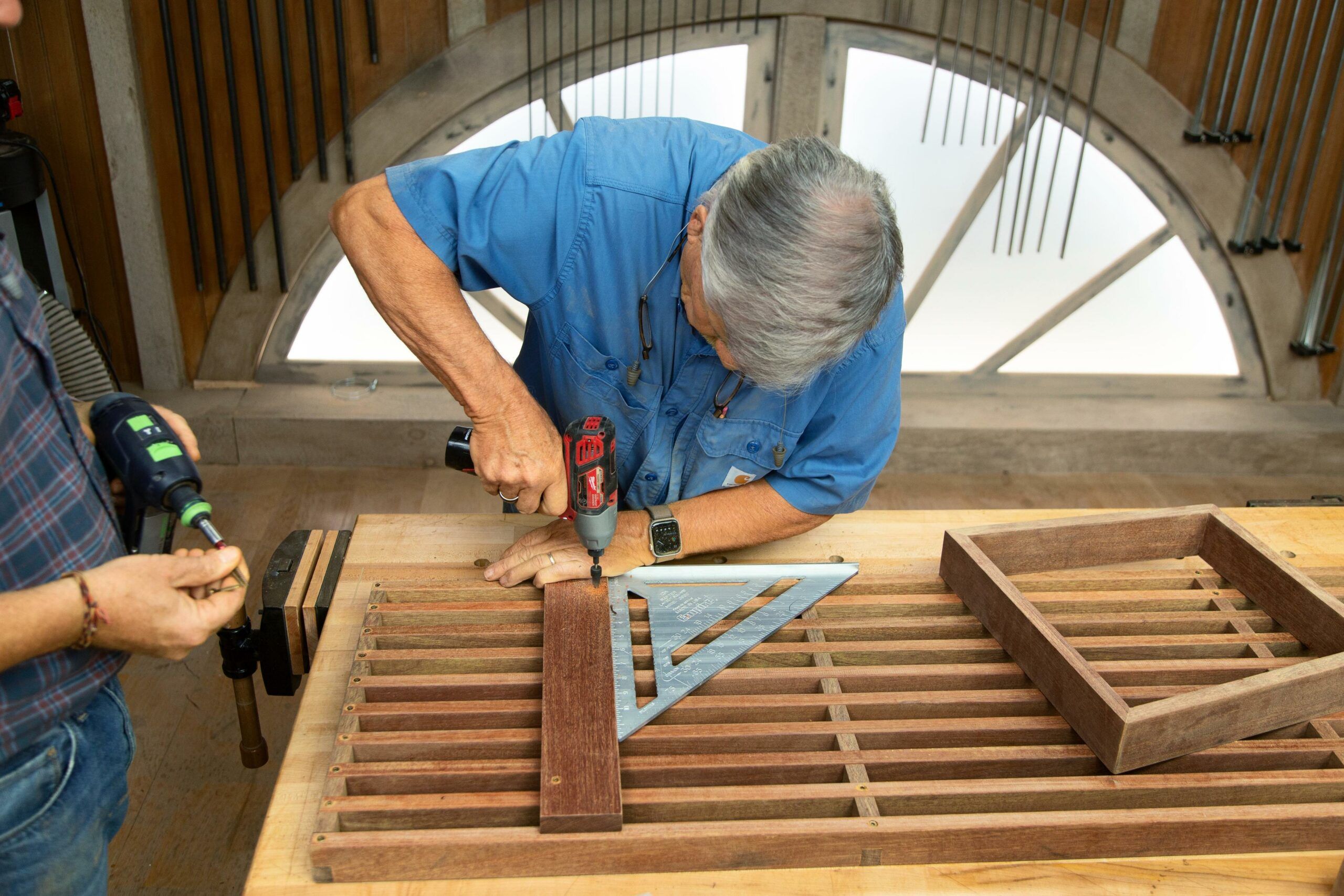
- Position the leg bases equil distance from the sides of the bench and 8 inches from the ends.
- Use a large rafter square to set each base perpendicular to the bench top’s edge.
- Drill four pilot holes through each base and into the slats.
- Drive a screw into each pilot hole to secure the leg bases.
Step 12: Mount the Legs

Center each leg on its base and drill four pilot holes into the leg’s top piece. Drive screws into the pilot holes to attach the legs to the bases.
Finishing Options
The ipe wood is naturally durable and can be used both indoors and outdoors. However, you may want to consider finishing options to protect the wood and enhance its appearance.
Indoor Use
For indoor use, you have several finishing options:
- Apply a clear varnish to protect the wood while showcasing its natural color.
- Apply a penetrating oil to enhance the wood’s natural beauty and provide some protection.
- Use a wood stain to alter the color of the ipe before applying a protective finish.
Outdoor Use
If you plan to use the bench outdoors, consider these options:
- Allow the ipe to weather naturally to a silvery-gray patina.
- Apply a low-VOC, penetrating tung oil such as ExoShield Premium Wood Stain to help the wood retain its rich color.
- Use a marine-grade varnish for maximum protection against the elements.




